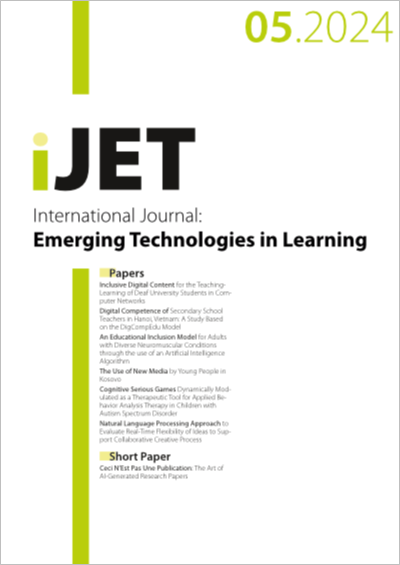An Educational Inclusion Model for Adults with Diverse Neuromuscular Conditions through the use of an Artificial Intelligence Algorithm
DOI:
https://doi.org/10.3991/ijet.v19i05.46619Keywords:
Inclusive education, diverse neuromuscular conditions, education for diversity, universal access to education, eye tracking algorithm, artificial intelligenceAbstract
An estimated 790 million individuals globally are afflicted with at least one form of disability. Among this population, 79 million are afflicted with diverse neuromuscular disorders. The educational inclusion of these people is complicated by the loss of the ability to communicate and breathe, difficulty walking, dressing, and/or eating without the assistance of another person. Several studies have demonstrated that assistive tools can function as a means of providing support. However, the feasibility of obtaining these instruments is hindered by limited supply, exorbitant prices, intricate operation, and substantial maintenance requirements. As a result, they are promptly abandoned following their acquisition. In contrast, artificial intelligence algorithms are of paramount importance as they enable the execution of computational processes that acquire knowledge from data, thereby enabling progressive performance enhancements deprived of explicit human intervention. The current study is aimed to tackle the obstacle of ensuring that this population has access to education by developing a mobile application that utilizes an eye-tracking algorithm to gather fixation data from individuals afflicted with this condition. This enabled the development of an innovative and personalized learning environment, which yielded outcomes including enhanced usability, accessibility, autonomy, time management, and physical barrier elimination.
Downloads
Published
How to Cite
Issue
Section
License
Copyright (c) 2024 Dra. Paula Valencia-Londoño, Dr. Hilderman Cardona-Rodas, Jovani Alberto Jiménez Builes

This work is licensed under a Creative Commons Attribution 4.0 International License.



